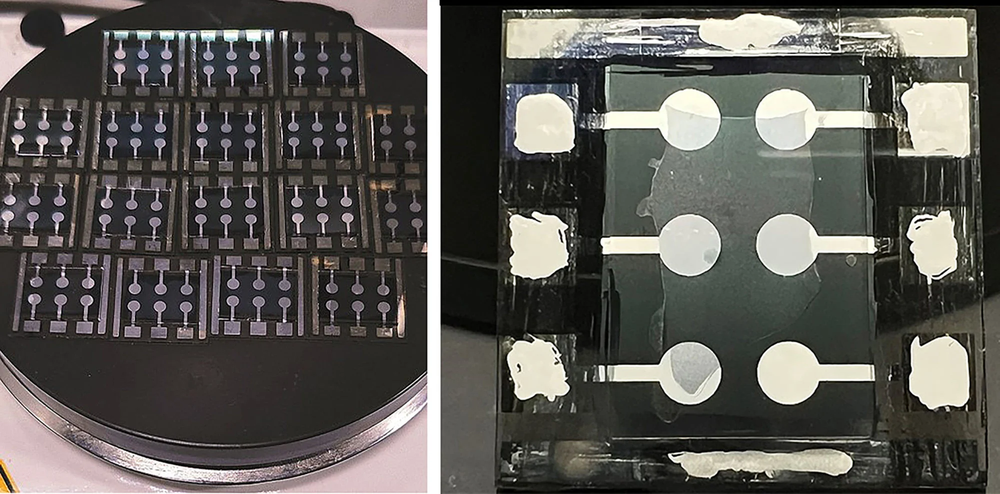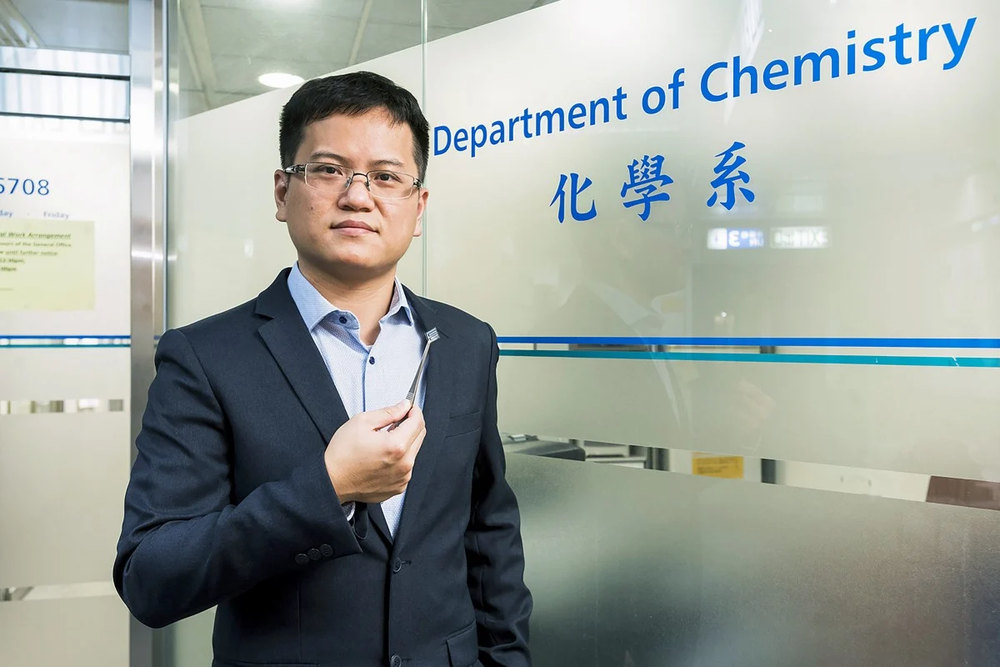Chinese-Designed Perovskite Solar Cell Revolutionizes Renewable Energy LandscapeIssuing time:2023-10-30 15:49 In a groundbreaking achievement that has the potential to transform the renewable energy sector, a team of Chinese researchers has unveiled a cutting-edge solar cell with remarkable efficiency, unprecedented stability, and an extended lifespan. This innovative technology could significantly reduce energy costs, possibly to as little as one-fourth of current silicon-based solar cells.
[Perovskite solar cells under high temperature ageing (left), Perovskite solar cells with novel SAM. Photo: City University of Hong Kong] The newly developed solar cells harness the power of perovskite, a low-cost and readily available inorganic material. Similar to traditional solar panels, perovskite cells convert solar energy into electricity, but with even higher efficiency. While perovskite solar cells (PSCs) have long held promise for surpassing the efficiency limitations of silicon-based cells, their thermal and chemical stability has been a persistent issue. Typically, these cells degrade quickly when exposed to oxygen, moisture, or high temperatures. The recently developed perovskite solar cell demonstrates an impressive power conversion efficiency (PCE) of 25.6 percent. Notably, the cell maintained over 90 percent of its initial efficiency even after 1,200 hours of operation at 65 degrees Celsius (149 degrees Fahrenheit). This groundbreaking research, led by Professor Zhu Zonglong from the City University of Hong Kong, in collaboration with Li Zhongan from Huazhong University of Science and Technology, was published in the peer-reviewed journal Science on October 20. The team noted in their paper, "Our study provides theoretical guidance for the design of efficient and stable PSCs and paves the path for easy access to commercially available PSCs." Previous research had indicated that using self-assembled monolayers (SAMs) as an interfacial layer could elevate the PCE to above 25 percent. However, traditional SAMs are only 1-2 nanometers thick and tend to decompose at high temperatures. Professor Zhu explained, "We designed the SAM in a unique three-dimensional structure and anchored it to a stable nickel oxide film to enhance both thermal and chemical stability. This development significantly enhances the cell's performance and energy conversion capabilities over its lifetime." Furthermore, while the lab-tested devices are relatively small, the manufacturing methods are straightforward and highly scalable, making them suitable for large-scale production. It is estimated that the Levelized Cost of Electricity (LCOE) for these new solar cells could be as low as $5.45 per megawatt-hour (MWh), a substantial reduction from the $24 per MWh for silicon-based solar cells. China has already established itself as a leader in the photovoltaic (PV) industry, exporting more than four billion solar cells in 2022, with a total export value of $46.38 billion, according to customs data. The Chinese PV industry's global market share exceeds 80 percent in all aspects, from raw materials to production equipment, as reported by the China Photovoltaic Industry Association (CPIA). As the global energy landscape pivots towards prioritizing solar and wind power, China's solar industry is poised to make substantial contributions to addressing climate change and boosting economic growth.
[Professor Zhu Zonglong of CityU. Photo: City University of Hong Kong] Professor Zhu believes that perovskite solar cells have diverse applications. "PSCs can be used in low-light conditions, and with modifications, they can absorb light of different wavelengths. Their versatility makes them ideal for use in flexible devices, transparent solar cells, bifacial solar cells, and indoor photovoltaics. Additionally, they are more cost-effective and environmentally friendly than traditional silicon cells, which will help reduce the environmental impact of the photovoltaic industry." However, a researcher from Sealand Securities stressed that work remains to be done before perovskite cells can be widely adopted. "To make perovskite solar cells more prevalent, the industry needs to enhance their stability and longevity, produce large, high-quality panels, and secure government support in the form of subsidies or tax incentives." Zhu envisions a future where perovskite technology matures and leads to a new wave of growth in the global photovoltaic market, particularly in China. "At that time, energy costs will be further reduced, and the entry of new investors will result in a significant increase in installed capacity. China's photovoltaic products may become more competitive due to higher efficiency and lower costs, potentially increasing the export volume of China's photovoltaic products." |



